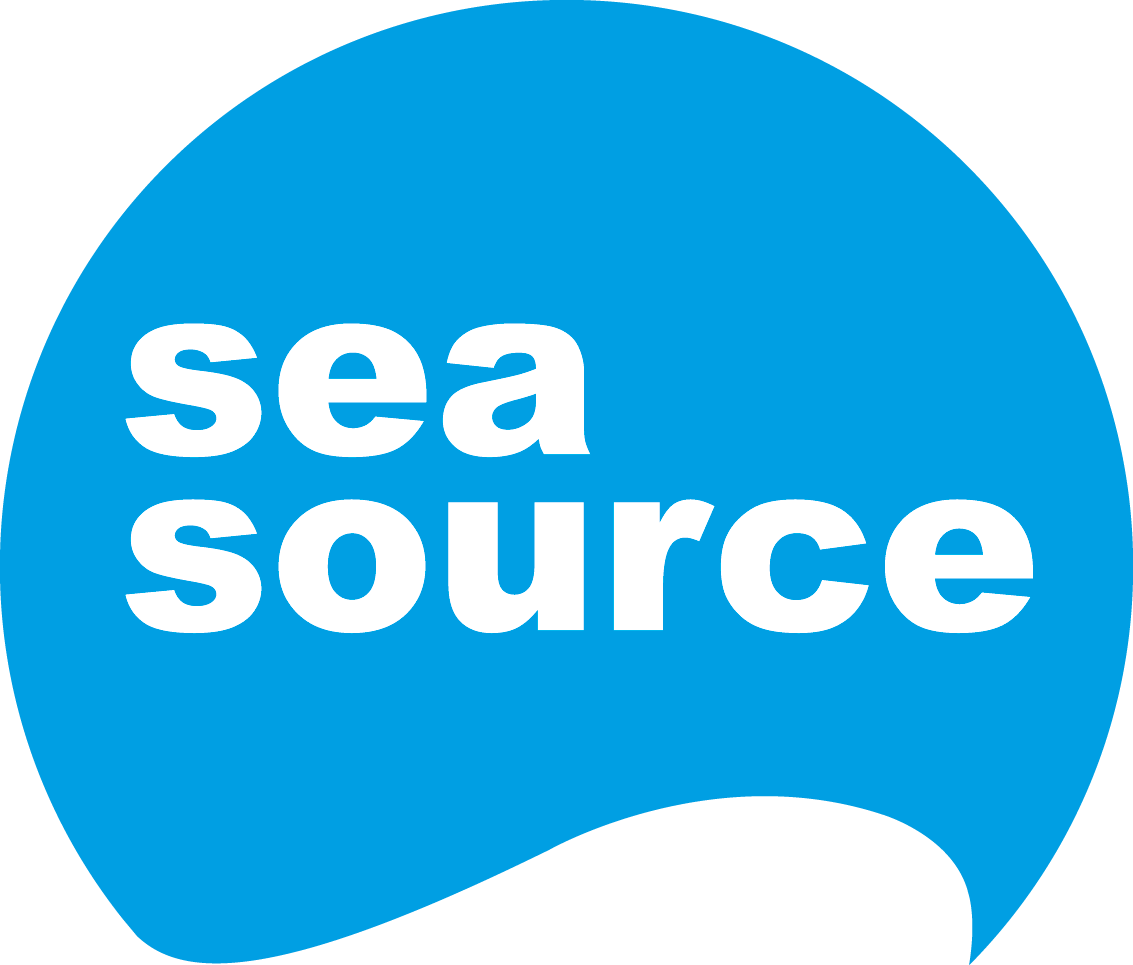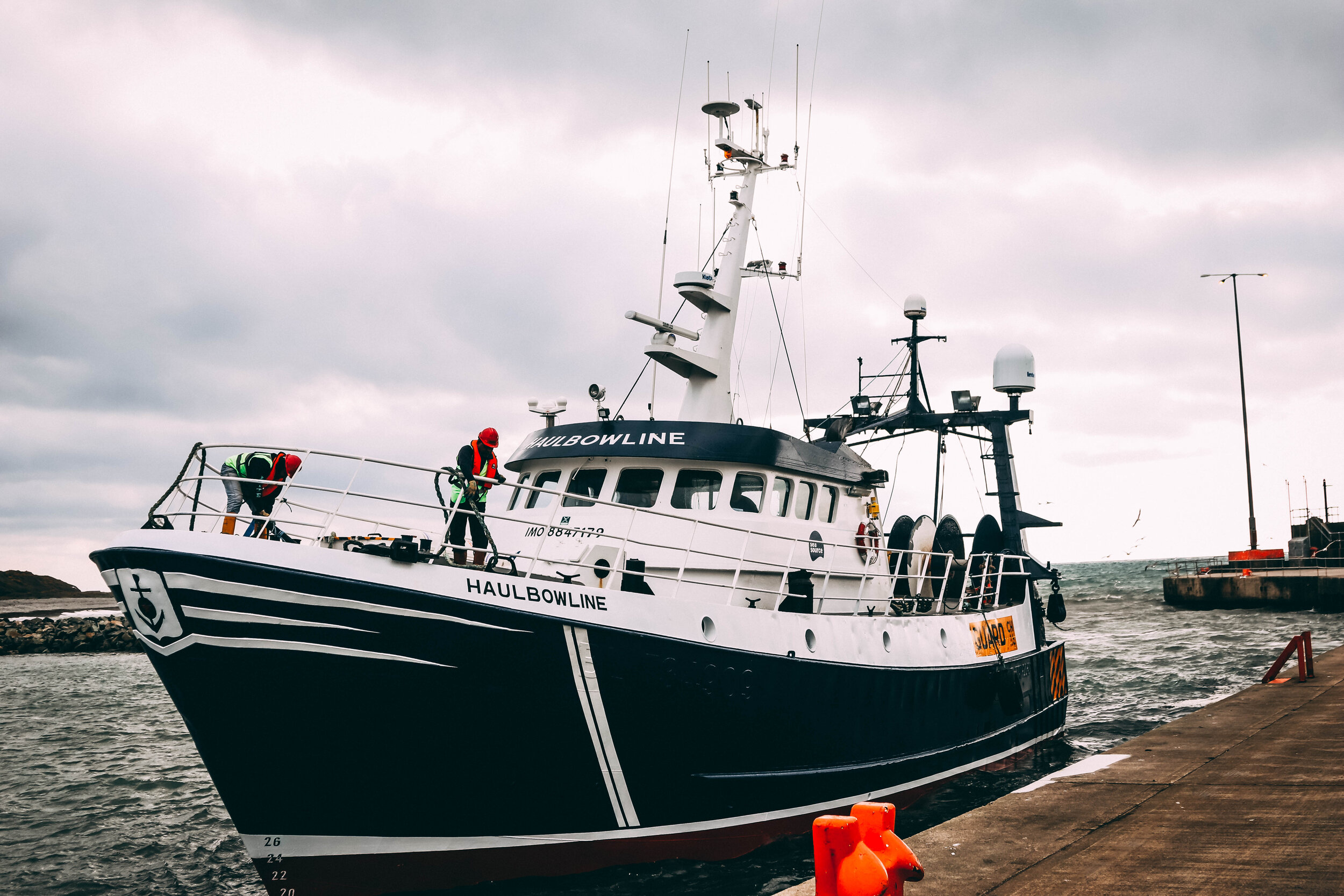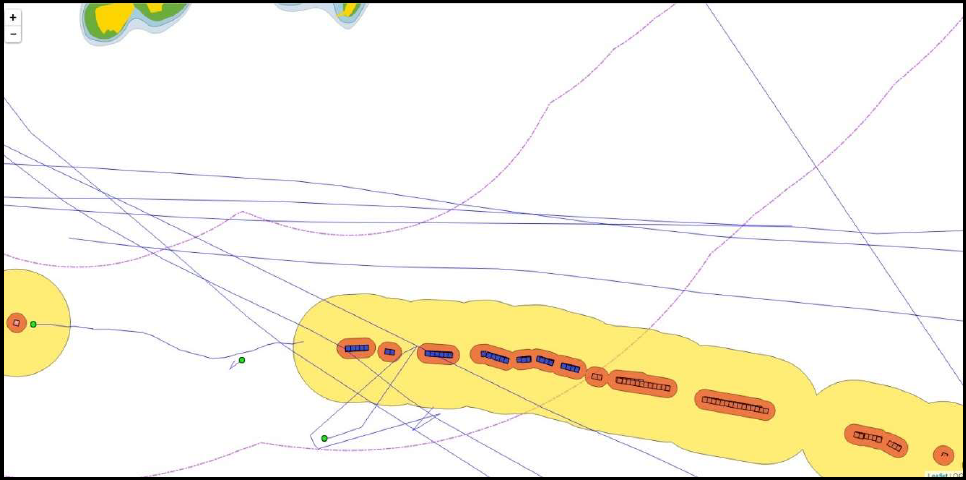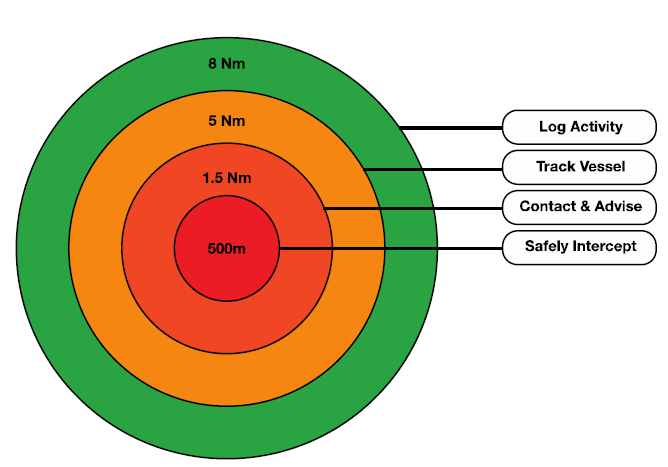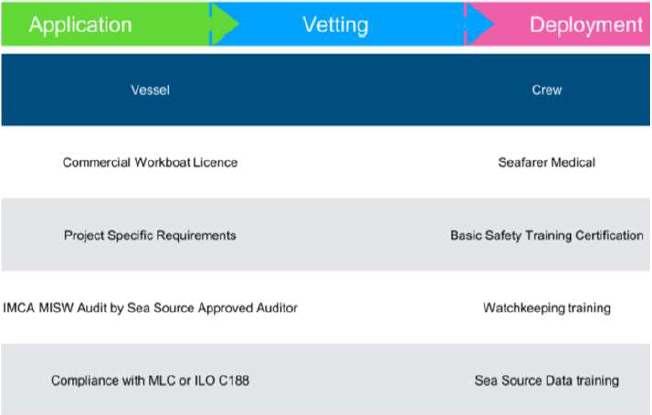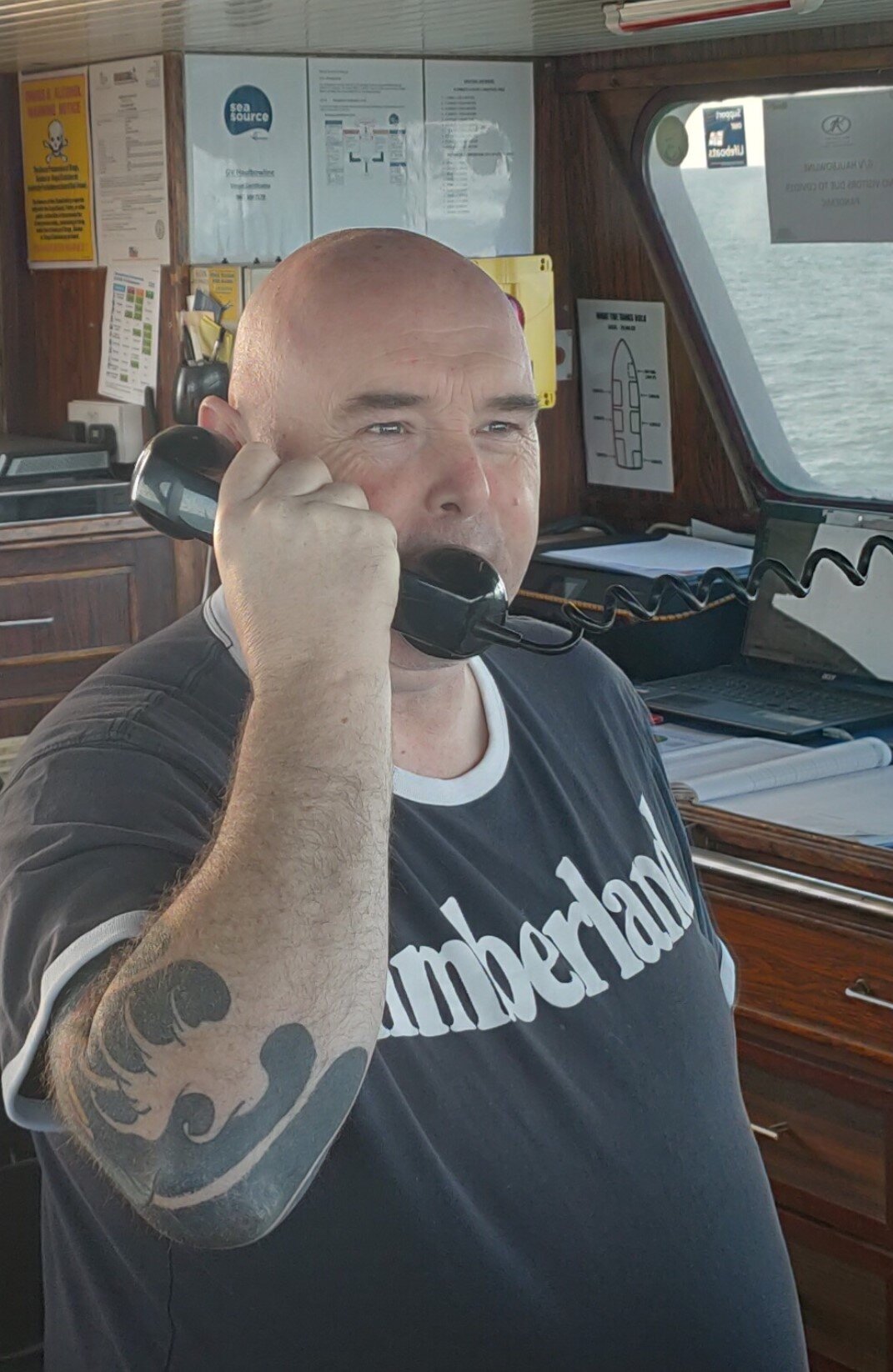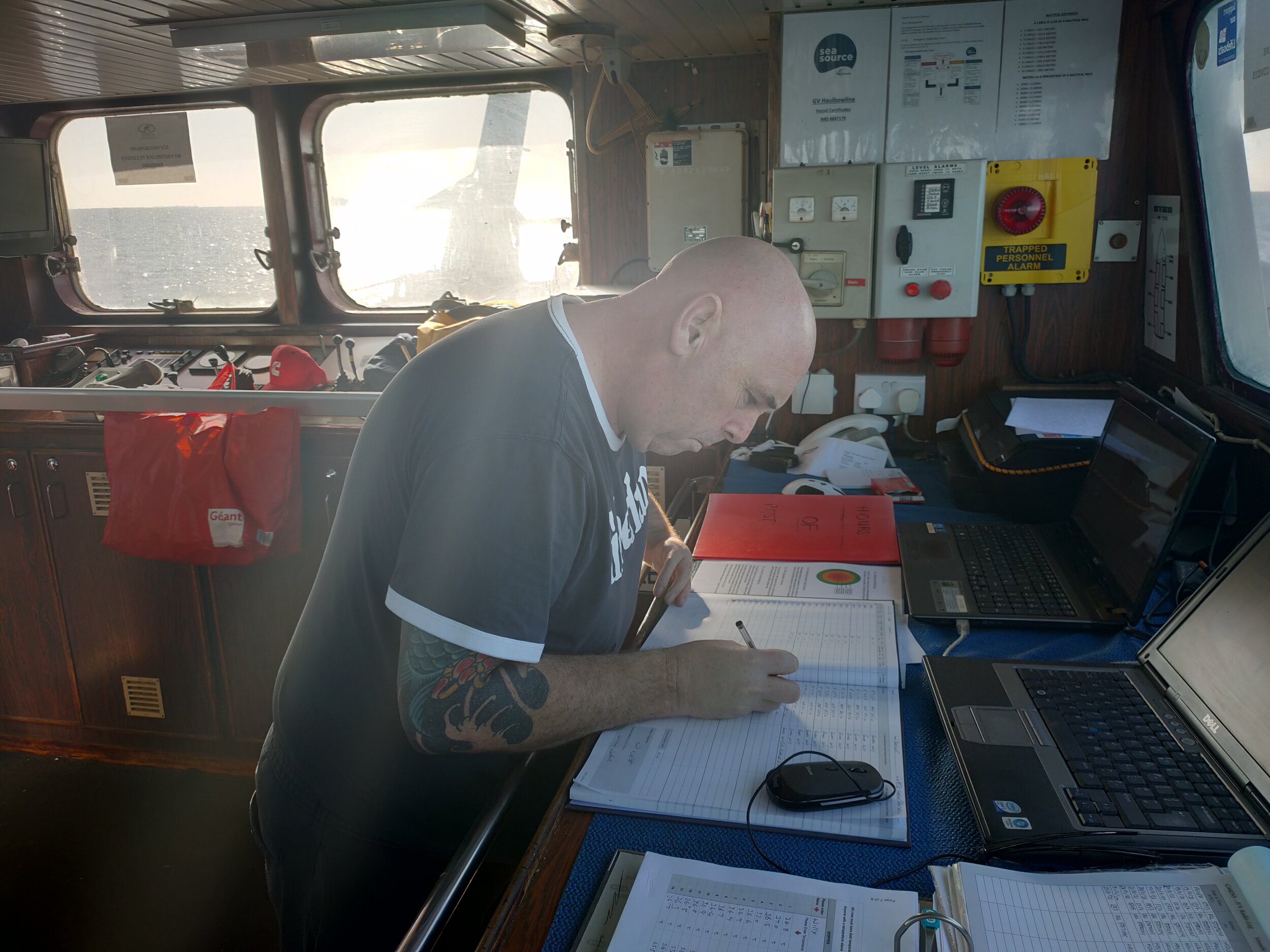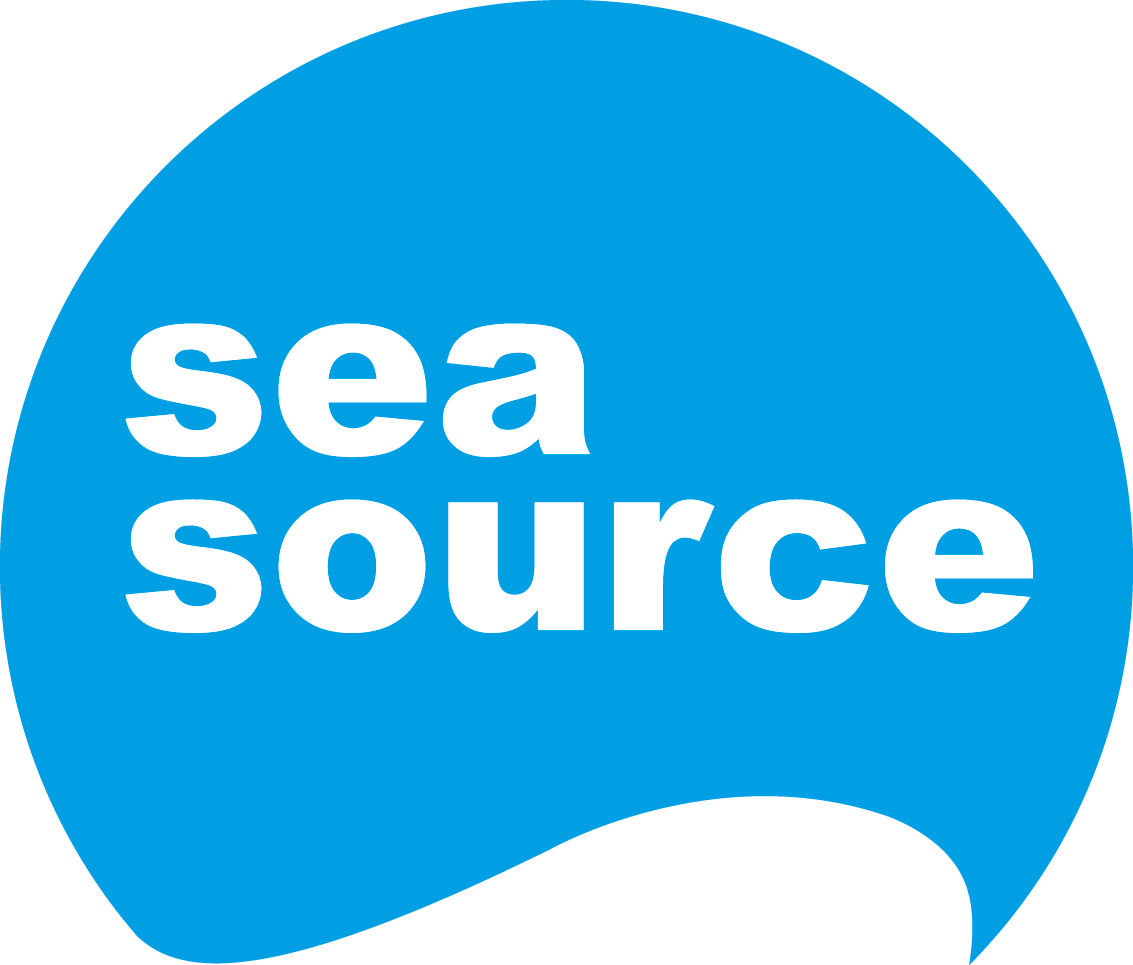A day in the life of a Sea Source Offshore skipper
When he starts his watch, Willie Napier (master of the GV Haulbowline) does not know the challenges the day may bring. But to meet them all, Willie can call upon his training and experience, as well as his proven crew, his well-equipped vessel and a 24x7 shore-based operation that uses state-of-the-art technology to back him up.
A specialised guard vessel for a specialist role
GV Haulbowline is one of over 30 guard vessels supplied to marine operations by Sea Source Offshore. As their label suggests, guard vessels are the guardian angels of the submarine cable industry and other offshore operations. Each guard vessel maintains a round-the-clock watch over its assigned project. For even multi-million dollar offshore projects, guard vessels are important goalkeepers. Well-equipped vessels with well-trained crews will prevent project delays, let alone project conflicts. In the complex interactions between the various users of the ever more crowded sea waves, guard vessels provide an essential safety buffer. They quietly manage down the risk of marine incursions, forming an important interface between other sea users (such as local fishermen) and the cable laying project. A good guard vessel crew aims to not just to keep the cable project safely running but also to protect the other sea users in the vicinity.
A typical working day
Willie comes on watch and completes a full handover from the previous watch keeper. The update he receives includes everything that has happened since the last handover, including details of significant ship movements, fishing vessels working in the area and any near or actual incursions into the guard area. Usually everything is normal. Indeed, as master of the vessel, Willie would have been alerted if any potentially serious situation looked like developing.
Keeping tabs with Guard Reporter
Willie is able to verify that things have been normal by checking the onboard Guard Reporter system. Guard Reporter is a specially developed application deployed by Sea Source Offshore on all guard vessels. The system gives a real time data feed back to the Operations Centres run by Sea Source Offshore (there are two geographically separate centres for service continuity) showing the guard vessel’s position and information about all other vessels in the area. That includes the cable laying vessel(s) as well as any other sea craft such as companion guard vessels deployed, trawlers, ferries, passenger ships, cargo vessels and even pleasure craft who might not be operating VHF radio, GPS or AIS. The system logs are automatically generated by events but also include observations added by the vessel master and crew if needed. The software makes the gathering of essential data highly accurate and very easy for guard vessel crews.
System plots show vessel positions, their movements and the area of protection
A 100% safety reputation to keep
As the day goes on, while maintaining a 24x7 lookout, Willie also runs through a safety drill with the crew. These drills are a daily procedure on guard vessels provided by Sea Source Offshore. Scenarios played out typically include fire, man overboard, oil pollution, power failure and the like. Such attention to detail has been rewarded with a pristine health and safety record. In the last two years alone, Sea Source Offshore has provided over 10,000 guard vessel days of cover with no injuries reported and no interruptions to the marine operations being guarded. That unblemished reputation is safe in the hands of Willie Napier and his crew.
The circle of protection
The Sea Source Offshore Operational Centres produce bespoke GIS information for guard vessels on station. This ensures that the vessels are continually monitoring their guard position in the most effective way. These charts can be updated as soon as necessary and delivered to the vessels onsite via the Internet as Raster navigational charts and traditional paper charts in WGS 84 co-ordinates on a Mercator projection. In this way, advisory and action buffers are logged directly onto the vessels’ plotter screens and radar overlays using calculated CPA (Closest Point of Approach) for any oncoming vessels.
The technology predicts any potential issues
The live Guard Reporter system enables the watch to instantly pinpoint any approaching vessel, giving positions, speeds, course and distance from the guarded asset, thus enabling a swift and precise response. Haulbowline is able to use up to 20% less fuel on station: the Guard Reporter enables her to monitor assets with less patrolling back and forth in the guarded area. But her crew are not just looking at radar screens: they are constantly scanning the horizon with binoculars seeking any vessels that might not have shown up as contacts on the AIS or radar.
Fully prepared for prevention
Long before any incident might develop, Sea Source Offshore has taken thorough precautions to head off potential trouble. Willie, his crew and the Haulbowline have been carefully prepared for each project they work on. Before a candidate guard vessel can be approved by Sea Source Offshore, the ship and its crew have to submit to a rigorous vetting process. Applications and vetting are handled online and the operations Centre teams check comprehensive proofs of capability and commission a full IMCA MISW audit inspection before a vessel (and crew) will be considered for deployment.
Rigorous selection and training checked
Once accepted, the crew was then properly trained and prepared for guard vessel duties. Monitoring their ongoing capabilities via the Sea Source Offshore online Ship Management System means that refresher training and certification are kept fully up to date for the master and crew of the Haulbowline.
Sea Source Offshore is certified to high standards and crews are trained and monitored to maintain those standards.
Warnings issued before an incident
Sea Source Offshore operates around the world. Well in advance of each project, Sea Source Offshore provides a relevant “Notice to Mariners” in the area and sends out plotter files formatted to other vessels’ plotters to show them the specific guard area.
Backing up that warning, guard vessels issue regular radio warnings to other sea traffic. At appointed times during the day, Willie goes to the communications area on the bridge to issue a DSC alert which announces the presence of his guard vessel and the safety notice to follow. After processing any acknowledgements from vessels in the area, Willie switches to the declared VHF channel and broadcasts an announcement similar to this example:
Sécurité, sécurité, sécurité.
All stations – all stations – all stations.
This is Guard Vessel Haulbowline MMSI Two Three Two Zero Two One Three Five Four.
In position 50 degrees 46 minutes North, 1 degree 9 minutes West.
All vessels steaming and fishing in our vicinity are kindly requested to keep a 1.5 nautical mile clearance of the protection co-ordinates.
For further information, please contact Guard Vessel Haulbowline standing by on VHF Channel 16 and VHF Working Channel 8.
OUT
Direct warnings
If a vessel approaches the guarded area, the guard vessel’s job is to approach the oncoming vessel and alert the skipper (via radio, ship’s horn, flashing lights or other means). This protects the guarded asset and also helps other sea users (such as fishermen) to operate safely in the area.
VHF is the key method used for medium range ship to ship communications
Comprehensive reporting for clients
The live Guard Reporter system enables the skipper/watch to record any possible incidents as they occur. The system monitors the various electronic systems on the bridge and reports back to the onshore monitoring/ operations hub for further investigation. This enables the operations team to interrogate the information and establish an electronic picture of events. This live monitoring and reporting system allows the entire team to make an evidence-based judgement on any further actions that might be necessary. Sea Source Offshore provides a wide range of client reports which may include hot spots, incursions and traffic movements. This can be per individual vessel or even a composite report for a fleet of guard vessels working on one of the larger projects.
Supported by the monitoring hub
On all operations, Haulbowline (and the other guard vessels deployed by Sea Source Offshore) are electronically linked to an onshore monitoring hub. The hub handles reporting and quality checking activities. It also ensures the guard vessels stay within the designated guard area. During challenging weather, the onshore team monitors the vessels and makes provisions based on the skippers’ recommendation. If a guard vessel is having technical issues or difficulties, the onshore technical support team can remotely login to the ship’s system via internet connection to help resolve any problem the ship’s crew cannot fix.
Logging and reporting are part of the daily routine for each guard vessel’s master
The day wraps up with reporting
At midnight, the offshore monitoring hub receives the automated daily reports from Haulbowline and any other guard vessels. The team reviews the reports early the next day, compiles all the data and sends on the required final reports customised to each client’s needs. The monitoring team also verifies that each vessel is recording all the appropriate data correctly, sending out the Sécurité broadcasts, conducting drills, maintaining their watch systems and logging vessels in the area. If there has been an incursion, the team will include all the data from the boat - e.g. position and time of the incursion, risk assessment and safety actions taken, etc.
On an ongoing basis, the shore team also checks that the certifications, training and insurance held by each vessel and her crew are fully up to date.
Safety supports sound sleep
When he hits his bunk at night, with a good day’s work done, Willie Napier can sleep soundly knowing that the safety of the Haulbowline and the project she guards is in good hands.
For further details
For further details on how the Sea Source guard vessel fleet can safeguard projects, please contact David Hill, our Business Development Manager via:
Email: davey@seasource.com
